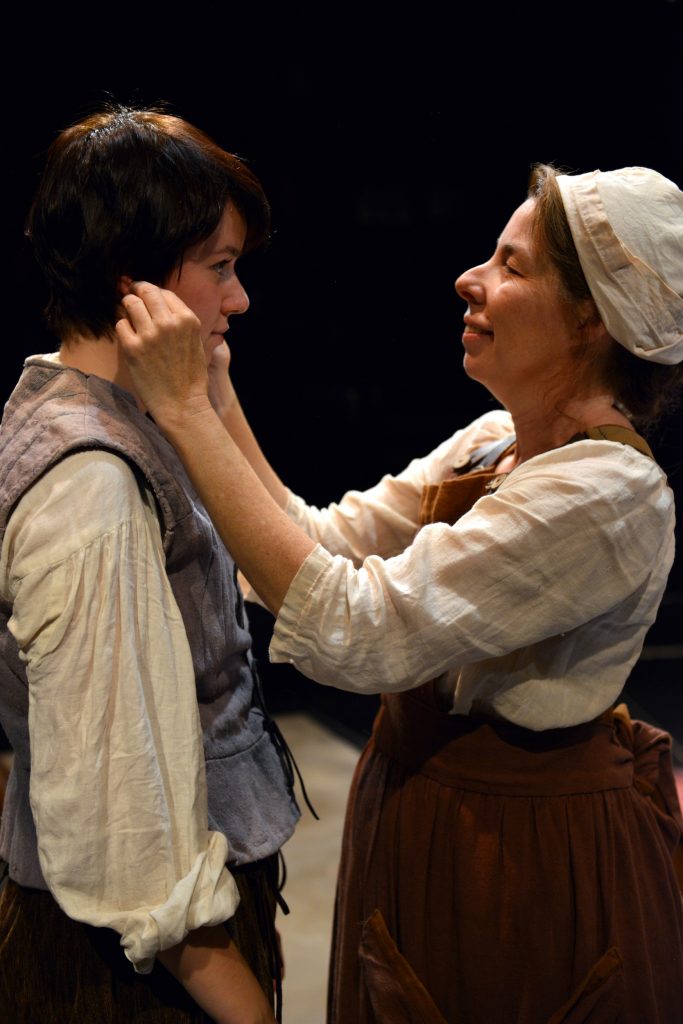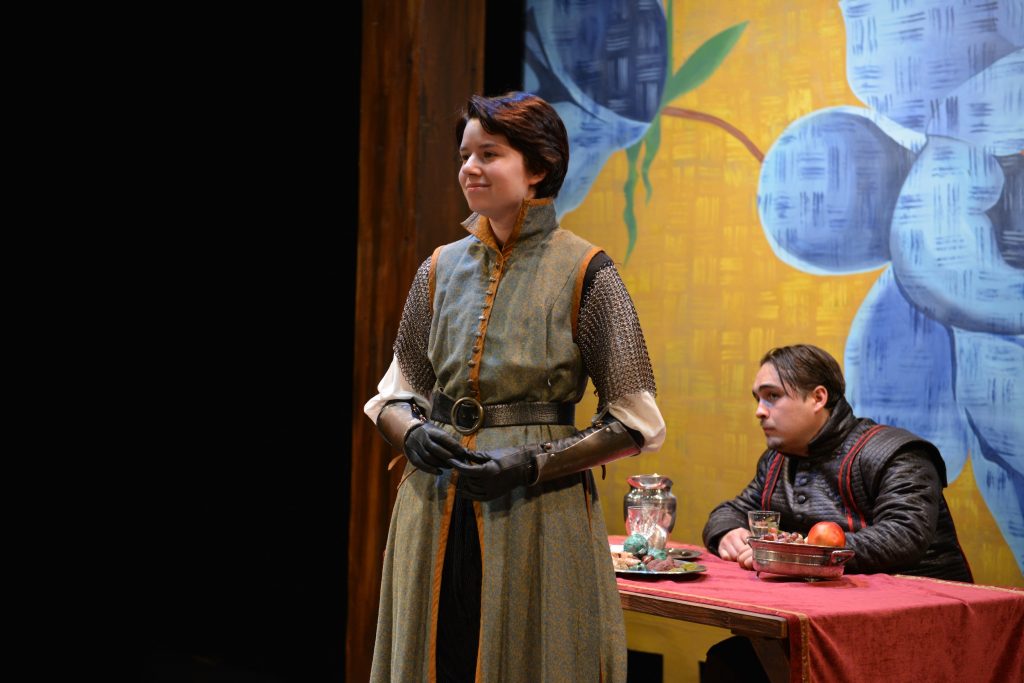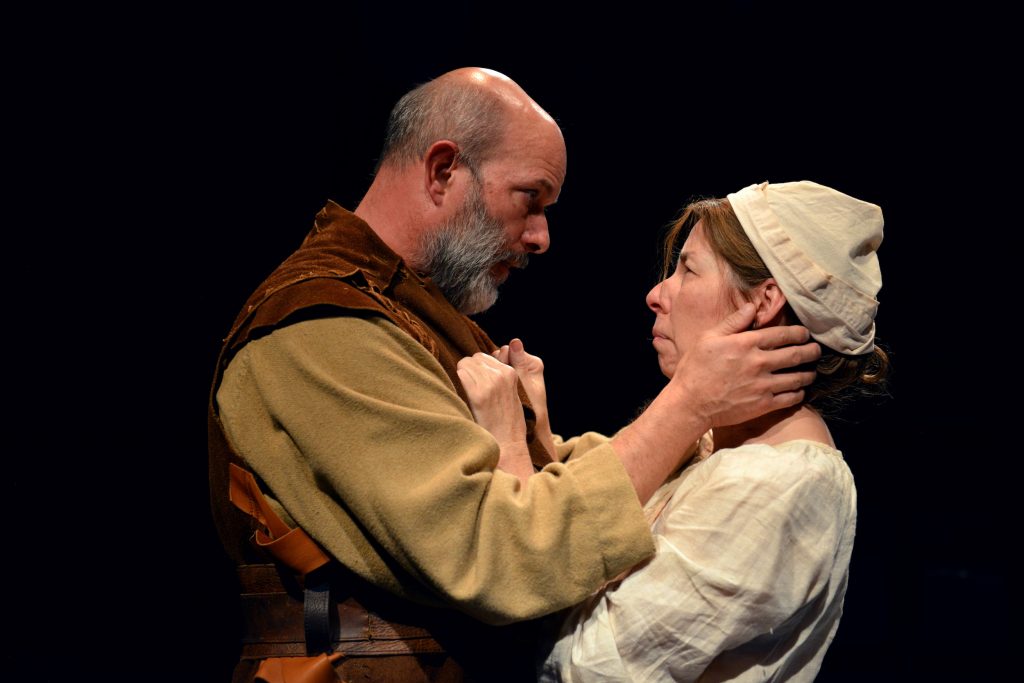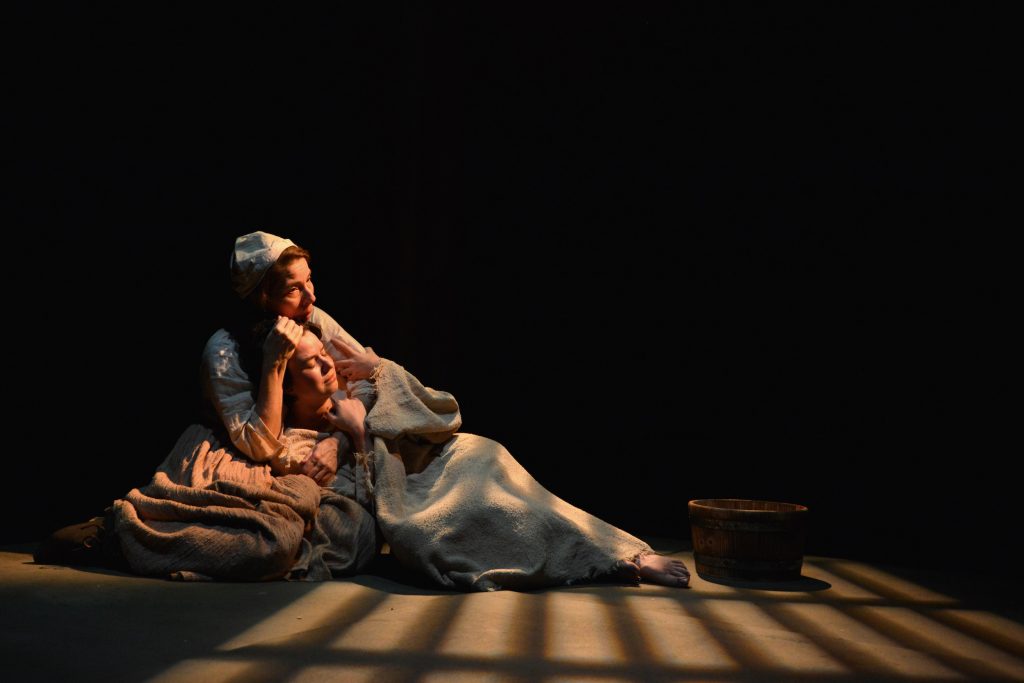
Credit: Jalen Laine Photography
At Pacific Theatre until October 5, 2019
Tickets from $20 at pacifictheatre.org or 604-731-5518
Posted September 17, 2019
I have never once given a thought to Joan of Arc’s mother but American playwright Jane Anderson did and the result of her musing is Mother of the Maid, first produced in 2015 but which later enjoyed a hugely successful 2018 off-Broadway run starring Glenn Close.
Isabelle Romée, a rustic, illiterate woman, was married to Jacques d’Arc, a peasant farmer and minor village official in the town of Domrémy in northeastern France. Joan – or Jeanne, in French – may have had one sister and three brothers, one of whom was called Pierre, the only sibling who appears in Anderson’s play.
According to history, twenty-five years after The Maid of Orléans was burned at the stake, her mother Isabelle petitioned the pope and was instrumental in having her daughter’s conviction overturned. So, unschooled as she was, Isabelle was obviously bold, feisty and persistent. It’s not such a stretch, therefore, to make Isabelle the central character in a play about Joan Arc, as she is called in Anderson’s play.

Credit: Jalen Laine Photography
While the play follows early 15th century historical events, the focus is on Isabelle, faced with raising a rebellious, defiant teenager who insists she is having visions and is being encouraged by St. Catherine to free France from the English. Isabelle’s own religious practise is of a more practical turn – praying, perhaps, for a good crop or the safe birthing of a lamb. Joan’s visions at age thirteen are suspect, perhaps brought on by her budding sexuality; at least, this was the opinion of her parents.
Written in present-day vernacular, Joan and her mother bicker in Mother of the Maid. Jacques, Joan’s father, is infuriated by the whole situation and just wishes to see his daughter married to stop all of what he sees as nonsense.
And so a large part of the play is spent in arguments between mother and daughter and feels very much like verbal sparring mothers and daughters have all the time. Except for what’s at stake.
Off Joan goes to face her destiny.

Credit: Jalen Laine Photography
While the denouement is familiar, Mother of the Maid is not about how it all ends but about how Joan and Isabelle get there and more importantly, how Isabelle counsels Joan.
Directed by Kaitlin Williams on a sturdy, wooden-pillared set by Carolyn Rapanos, this Pacific Theatre production is ambitious with some very fine period costumes by Stephanie Kong and Jessica Oostergo.
But it is the excellent performances – especially those of Anita Wittenberg (as Isabelle) and Shona Struthers (Joan) that keep this script moving. And it takes a while to get going: arguments between teenagers and their parents are familiar territory. But once Joan leaves home, Struthers takes on a certain swagger, a not altogether attractive certitude before crumbling after her character’s capture by the English.
And here’s where Mother of the Maid gets really interesting and gives Wittenberg room to stretch. St. Catherine is no longer ‘visiting’ Joan. The church is unable or unwilling to save her. The king of France won’t pay a ransom and, chances are, the English wouldn’t accept it. They want Joan Arc gone. She’s a rabble-rouser in the true sense of the word. French troops rally around her and she is successful in ending the siege of Orléans. She’s a problem that must be solved. All she has left is her mother.
Wittenberg cranks things up more than a notch at this point and reaches an excruciating peak with a drawn-out howl that will tear the heart out of every parent in the audience.

Credit: Jalen Laine Photography
Ian Butcher is solid as Jacques who, incidentally, went blind upon Joan’s immolation and died several days later of a heart attack.
Raes Calvert is Joan’s brother Pierre, a lazy, self-absorbed young man hoping to have some of Joan’s glory wash off on him. AJ Simmons makes a lovely, if conflicted, lady of the court who is unable to help Joan in any significant way. Richard Newman and Chantal Gallant complete the cast.
Joan of Arc was accused of heresy and she did, according to extant records, sign an abjuration (recanting) document which she did not, apparently, understand. But the accusation of heresy failed for several legal reasons and she was actually condemned for cross-dressing (a secular criminal offence at the time). Despite there being loopholes to excuse her, she was convicted and executed. For wearing trousers. Unimaginable.

Credit: Jalen Laine Photography
Playwright Anderson is onto something in this play. It takes a while but it’s critical: Isabelle probably doesn’t even believe in St. Catherine, but in her daughter’s final moments of terror and despair, she counsels Joan to think of St. Catherine and to cast her eyes heavenward. What else could a mother do?
Joan of Arc was executed in 1431, vindicated in 1456, beatified in 1909 and canonized as a saint in 1920. Statues of her appear all over France; ironically, she is most frequently shown cross-dressed and in armour.

